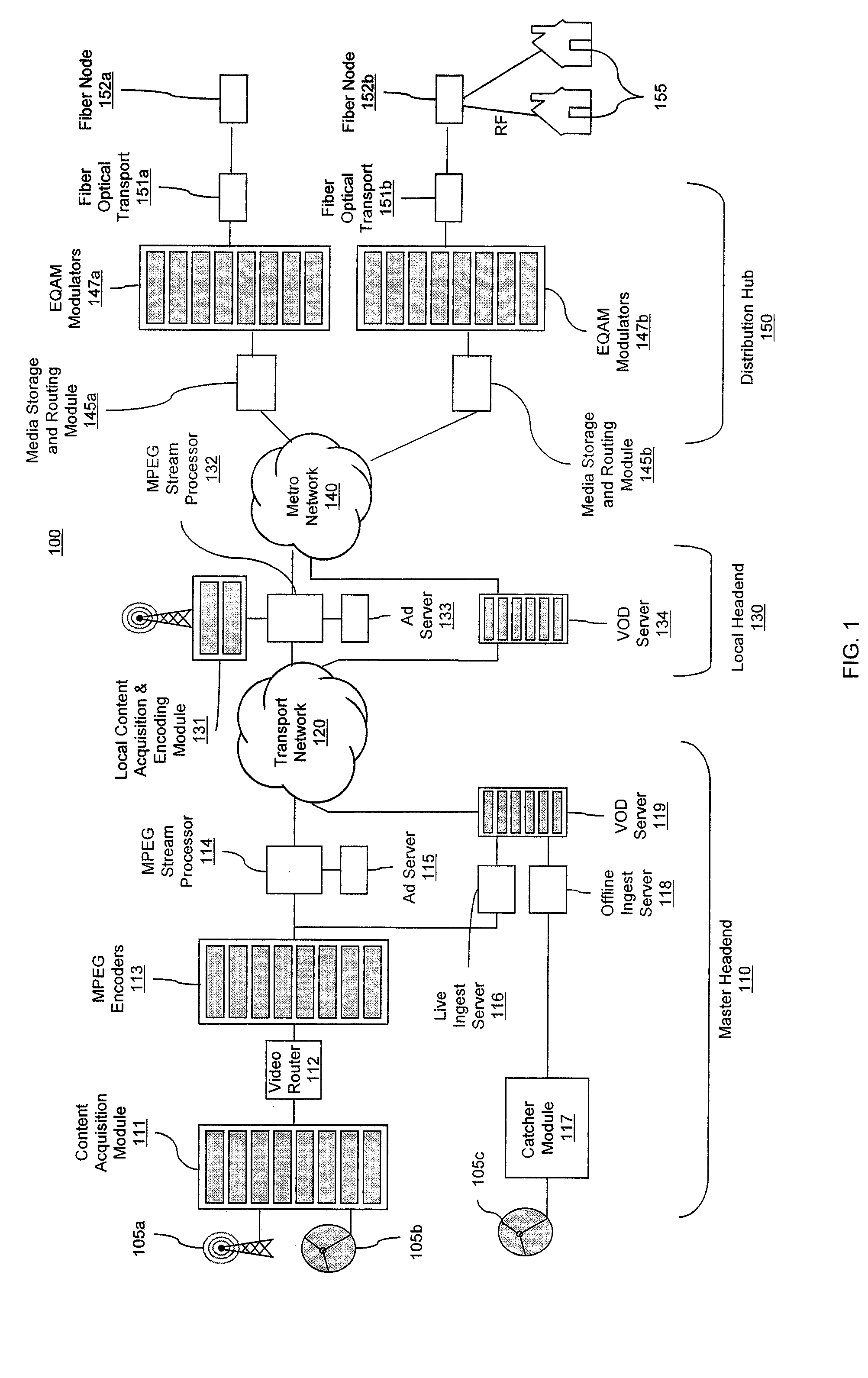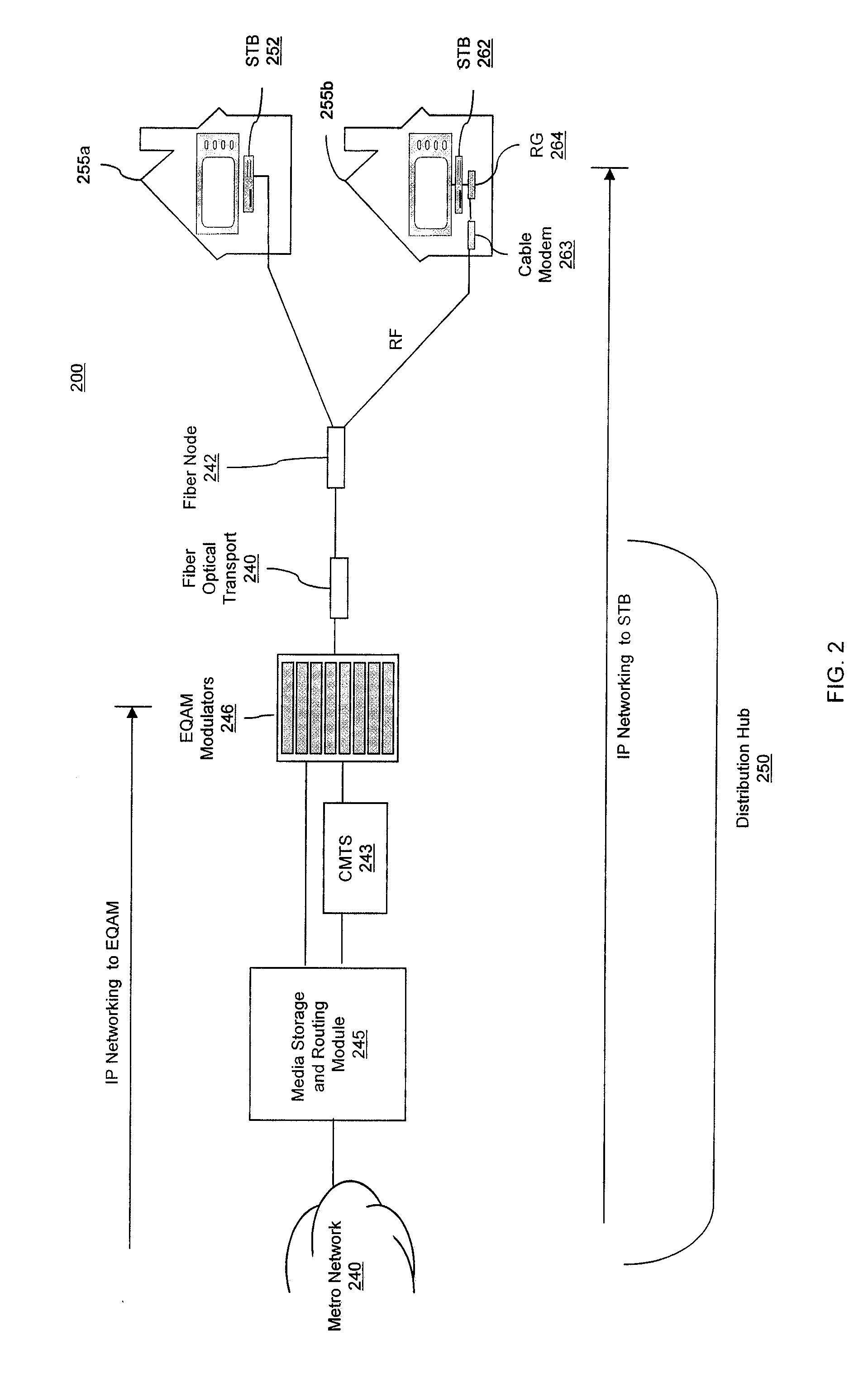Video Delivery Module
a video delivery and module technology, applied in the field of computer-based methods and apparatuses, can solve the problems of content flexibility and choice for subscribers, efficiency comes at the expense of efficiency, and achieve the effects of low cost, high efficiency in the use of network resources, and reduced deployment costs
- Summary
- Abstract
- Description
- Claims
- Application Information
AI Technical Summary
Benefits of technology
Problems solved by technology
Method used
Image
Examples
Embodiment Construction
[0056]The techniques described herein enable the application of VOD systems expanding beyond movies and selected television programs to the real-time ingest of television broadcast programs to allow network-based PVR (nPVR) and time-shifted television. Network-based time shifting allows the subscriber to view recently broadcast programs within a window of a few hours. Unlike a PVR or nPVR service of the prior art however, with some of the techniques described herein, the subscriber does not have to pre-select a future program for recording. Instead, the subscriber is allowed to look backwards in time and start from the beginning of a program that has already aired or has already begun to air. Subject to content owner restrictions, the broadcast program is stored in real-time to be made available to subscribers for unicast viewing at a future time, typically within a few hours of its original broadcast, but perhaps as long as several days or a week.
[0057]In addition to delivering sto...
PUM
 Login to View More
Login to View More Abstract
Description
Claims
Application Information
 Login to View More
Login to View More - R&D
- Intellectual Property
- Life Sciences
- Materials
- Tech Scout
- Unparalleled Data Quality
- Higher Quality Content
- 60% Fewer Hallucinations
Browse by: Latest US Patents, China's latest patents, Technical Efficacy Thesaurus, Application Domain, Technology Topic, Popular Technical Reports.
© 2025 PatSnap. All rights reserved.Legal|Privacy policy|Modern Slavery Act Transparency Statement|Sitemap|About US| Contact US: help@patsnap.com



